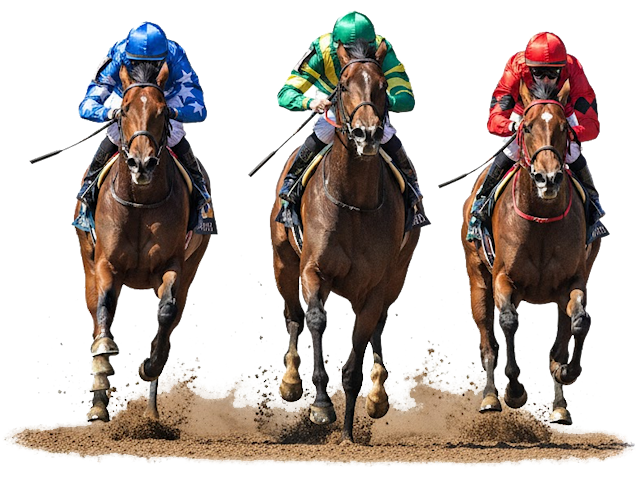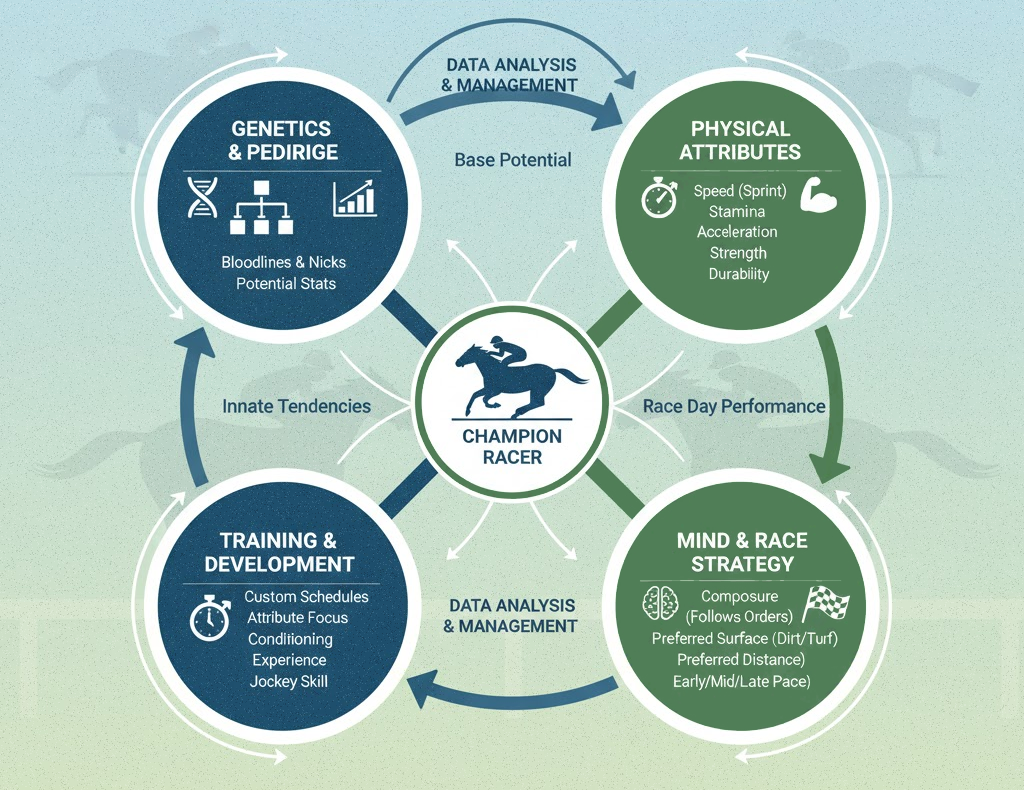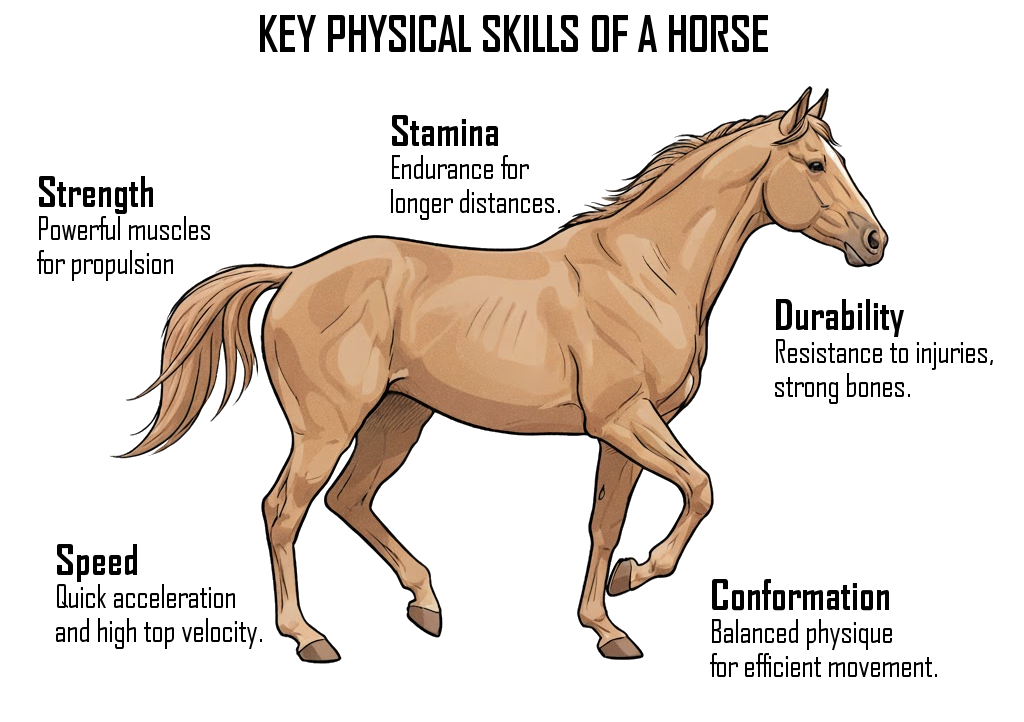 24.10.2025 - Breeding is a core component of success in online horse racing management games. A superior horse originates from a planned breeding program. This article provides practical strategies to analyze genetics, select parent horses, and consistently produce champions for your virtual stable.
24.10.2025 - Breeding is a core component of success in online horse racing management games. A superior horse originates from a planned breeding program. This article provides practical strategies to analyze genetics, select parent horses, and consistently produce champions for your virtual stable.
Success in online horseracing management games depends heavily on your stable's quality. While acquiring horses is one option, breeding your own winners offers greater control and long-term advantages. A successful breeding program requires data analysis, strategic planning, and a deep understanding of the game's mechanics.

First, you must understand the game's genetic engine. Each horse racing management game uses a different model to determine a foal's abilities. Some games rely on visible stats from the parents. The foal's potential might be an average of the parent's stats, with some random variation. Other games use complex hidden values. These hidden values represent genetic potential for traits like speed, stamina, or acceleration. Your first task as a manager is to study these mechanics. Read game guides, explore community forums, and test theories yourself. You cannot breed winners if you do not know how the game calculates potential.
Next, you must select your breeding stock carefully. Your breeding stock includes your mares (female horses) and the stallions (male horses) you choose to pair them with. Data should drive every decision. Do not choose horses based on sentimental names or coat colors.
When evaluating a mare, analyze her race record. What were her best performances? At what distances did she excel? On what track surfaces (dirt, turf) did she run best? Look at her pedigree. A strong family history indicates she may pass on positive traits.
When evaluating a stallion, his race record is important. His offspring's performance is more important. Most games provide stallion statistics. Look at his progeny. How many winners has he produced? What are their average earnings? A stallion who was a champion himself but produces poor offspring is a bad investment. Look for stallions that consistently produce horses better than themselves.
Use breeding stock to correct weaknesses. This is a primary strategy. If your mare was a fast sprinter but had poor stamina, do not breed her to another sprinter. Find a stallion known for producing offspring with high stamina. Your goal is to pair horses whose strengths and weaknesses complement each other. This increases the probability of producing a well-rounded, elite foal.
A pedigree is the horse's family tree. In horse racing management games, pedigrees are data tools. They show you which bloodlines are present in your horse. Certain bloodlines are famous for speed. Others are known for stamina. Your job is to identify these trends within your specific game.
Pedigree analysis also helps you find "nicks." A nick is a specific combination of bloodlines that produces successful racehorses. For example, stallions from bloodline A might have a very high success rate when bred to mares from bloodline B. Game databases or community websites often track these nicks. Use this data. Breeding a mare to a stallion with a high nick rating is a statistically sound decision.
You must also manage inbreeding. Inbreeding is the practice of breeding closely related horses. In some games, a small amount of inbreeding can reinforce positive traits. However, high levels of inbreeding almost always lead to negative consequences. These can include poor stats, a higher risk of in-game injury, or negative hidden traits. Most games provide an "inbreeding coefficient" calculation. Keep this number low unless you have a specific, data-backed reason to increase it.
Statistics are the most important tool for a breeding manager. You must analyze performance data. Key statistics to track for any horse include win percentage, career earnings, speed ratings, and specific attribute scores like stamina or acceleration. When selecting a stallion, look for data points like the Average Earnings Index (AEI). An AEI above 1.00 means the stallion's offspring earn more, on average, than the general horse population. This is a valuable indicator.

Your breeding goals must be specific. Are you trying to breed a horse for short-distance sprints or long-distance classics? The stats required for these two types of horses are very different. A sprinter needs high speed and acceleration. A long-distance horse needs exceptional stamina. Select parents that possess the specific stats you want to replicate.
Breeding a high-potential horse is only the first step. That potential must be realized through effective training. Online sport management games require you to manage your horse's development. You will assign training schedules to improve specific attributes. A horse with high genetic potential will not become a champion without the correct training regimen. You must also balance this training. Overtraining can lead to low energy or injuries, costing you valuable race time.
Breeding involves virtual economics. Top-tier stallions command very high stud fees. You must manage your virtual budget. Before you pay a high fee, calculate the potential return on investment. Will the resulting foal be able to win enough prize money to justify the cost? Sometimes, a mid-level, less expensive stallion with excellent complementary stats is a better financial decision than an overpriced, popular champion. A few expensive, failed breedings can bankrupt your stable.
Finally, breeding requires patience. It is a long-term strategy. A foal must be born, grow to maturity, and complete its training. This process can take many in-game seasons. You will not build a championship stable overnight. You must keep detailed records. Note which breeding pairs were successful. Note which ones failed. Use your own stable's data to refine your strategy over time. Consistent, data-driven decisions will eventually produce the winners you seek.




